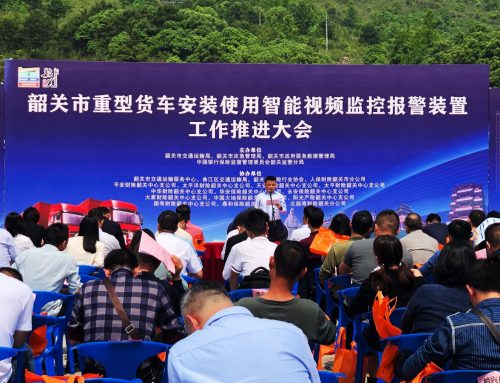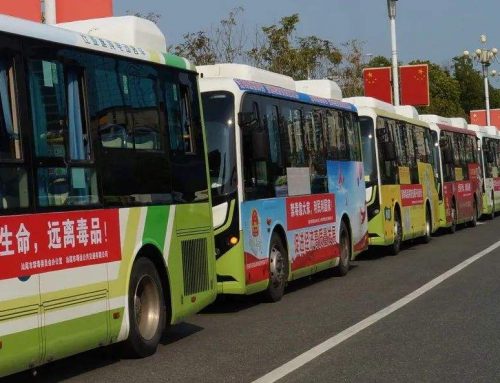China’s economy returned to modest growth in the second quarter of 2020 and reverted from the first contraction on record in the first quarter this year, as COVID-19 eases and policymakers announced economic packages, official data showed Thursday.
The world’s second-largest economy grew by 3.2 percent in April-June from a year earlier, reversing a 6.8-percent decline in the first quarter – the first contraction since at least 1992 when official quarterly gross domestic product (GDP) records started, according to China’s National Bureau of Statistics. In the first half of 2020, China’s economy declined by 1.6 percent year on year.
Read more:
The reading beats the median 1.1 percent forecast by economists surveyed by Nikkei and coincides with an AFP poll which projected the economy would claw its way back into growth territory in the second quarter of this year, after the coronavirus pandemic handed the world’s second largest economy its first contraction in decades. The poll also forecast that China will be the only major economy to experience positive growth this year.
“China’s GDP growth rebounded rapidly in the second quarter, thanks to the successful epidemic control, orderly resumption of work and production, and supportive government policies,” said Bai Ming, deputy director of the international market research institute of Chinese Academy of International Trade and Economic Cooperation.
The growth is unexpected as the world’s economic growth between April and June is arguably the worst in the past few decades, according to Nomura Securities. The growth rates of developed economies such as the U.S. and countries in Europe are basically below negative 10 percent year on year.
“China’s economy has staged an impressive comeback since mid-March, driven by pent-up demand, a catch-up in production, a surge in medical product exports and stimulus in both China and other major economies that has supported demand for goods made in China,” said Lu Ting, chief China economist from Nomura.
In the first half, the country’s added value of major industrial enterprises declined by 1.3 percent year on year, 7.1 percentage points lower than the decline in the first quarter. But the figure soon grew by 4.4 percent in the second quarter.
The decline of the service sector narrowed in the April-June period and modern service industries showed robust growth, with added value of the tertiary industry going up 1.9 percent in the second quarter and overcoming a 5.2-percent tumble from January through to March.
Aside from these, market sales of consumer goods gradually improved in the first six months and reached 17.2 trillion yuan, down by 11.4 percent year over year, or 7.6 percentage points slower than the decline in the first quarter.
Looking back at the first half of the year, after the epidemic was brought under control domestically, “retaliatory consumption” was not evident, but “retaliatory savings” were soaring, and the contribution of consumption to the economic recovery was significantly behind the investment engine, said economists from ICBC International. They expect retail sales growth will probably be positive in the third quarter.
Fixed asset investment fell 3.1 percent in the first half of the year, narrowing remarkably from a 6.3 percent decline in the first five months of the year. Investment in high-tech industries went up by 6.3 percent, while that in the first three months went down by 12.1 percent.
The surveyed unemployment rate of the population aged from 25 to 59 in June stood at 5.2 percent, which was 0.2 percentage points lower than that in May. In the first half, 5.64 million jobs were created in urban areas, accounting for 62.7 percent of the full-year target.
In the first half of 2020, China’s goods trade, in U.S. dollar terms, contracted by 6.6 percent year on year to settle at 2.02 trillion U.S. dollars. During the same period, exports edged down by 6.2 percent year over year to reach 1.10 trillion U.S. dollars, while imports tumbled by 7.1 percent to meet 930.9 billion dollars.
“China’s exports may be a relatively large shift from the U.S. to ASEAN. The volume of bilateral trade with the U.S. dropped significantly, and trade with Japan and the European countries held the line, while trade with the ASEAN countries increased dramatically. The Sino-U.S. trade war will not harm China’s trade in the long run,” said Chen Jiahe, the chief investment officer at Novem Arcae Technologies.
In a business confidence survey conducted by IHS Markit last month, the number of Chinese companies that expect business activity to grow over the next year rose by 22 percent, up from 1 percent in February and above the global average of 15 percent.
Thursday’s economic batch also revealed China-U.S. trade reaching the tune of 1.64 trillion yuan, falling off 6.6 percent from the same period a year earlier. Among them, exports to the U.S. stood at 1.25 trillion yuan after going down 8.1 percent; imports from the U.S. settled at 395.62 billion yuan, down 1.5 percent, with trade surplus sinking by 10.8 percent.
The U.S. economy contracted in the first quarter at its sharpest pace since the 2008 financial crises as stringent measures to slow the spread of the novel coronavirus almost shut down the country, ending the longest expansion in the nation’s history.
U.S. gross domestic product is tipped to shrink an unprecedented 35.0 percent this quarter after contracting by 4.8 percent in the first quarter, on a seasonally-adjusted annualized basis, according to a Reuters poll in April.
“The quality of the U.S. economic recovery is low. The epidemic situation in the country is getting worse, as it preferred to save the economy on the sacrifice of the health of its people,” said Bai.
“It is difficult to predict the economic recovery in the U.S. as the epidemic in the country has not been controlled. It is basically the only developed country that has not controlled the epidemic,” said Chen.
China’s inflation sailed further into growth territory in June, with its main gauge of the consumer price index moving upward by 2.5 percent from a year earlier. The indicator expanded 0.1 percentage points as compared to May due to prices rise in pork and vegetables.
The year-on-year growth rate of CPI in the third quarter is expected to decline, but thanks to the support of consumption and pork prices, the decline is expected to be significantly less than market expectations, said economists from ICBC International.
Meanwhile, China’s producer price index (PPI), which measures costs for goods at the factory gate, fell by 3.0 percent from a year earlier, lower than the 3.2-percent contraction tipped by analysts in a survey by Bloomberg.
The PPI figure ended four consecutive months of falls, increasing by 0.1 percent in June on a monthly basis, as prices of international bulk commodities rebounded and the domestic manufacturing sector regained some ground. In the first half of the year, PPI fell by 1.9 percent, weighed on by the COVID-19 pandemic.
The resilience advantage of the Chinese economy in the second half of 2020 is expected to be a scarce resource in the global market, said economists from ICBC International. They added that the attractiveness of RMB assets will therefore remain high, and that the long-term inflow of international capital is expected to continue.
After the V-shape recovery in the second quarter, Nomura expected the country’s sequential growth recovery to get weaker on a bunch of headwinds in the second half of the year. “Into H2, the recovery in the U.S. and EU could add further boost to China’s growth, but we also see many challenges,” Lu said.
“Pent-up demand will lose most of its steam, some social distancing measures may remain in place due to the protracted pandemic, the surge of exports of medical products and work-from-home related gadgets will cool down. Beijing appears reluctant to step up stimulus measures and it is even introducing a fresh round of tightening measures on the property markets, the floods around the Yangtze River could be worst in two decades, and rising U.S.-China tensions could hit China’s exports and related manufacturing investment. Last but certainly not the least, the risk of a second wave of COVID-19 cannot be ignored,” Lu explained.
Nomura expected sequential quarter-on-quarter growth to drop to 2.5 percent in the third quarter and 1.7 percent in the fourth quarter, and year-on-year real GDP growth to rise modestly to 4.3 percent in the third quarter and 4.5 percent in the fourth quarter.
The central bank is expected to maintain its easing stance, but it may postpone some previously planned monetary easing measures given the recent stock market rally, according to Nomura.
In the second half of the year, the global economy will still face huge uncertainties such as public health risks, geopolitical risks, and financial market risks. As a result, the Chinese central bank will cut the reserve requirement ratio and interest rate slightly and frequently in the third quarter, according to ICBC International.




